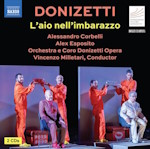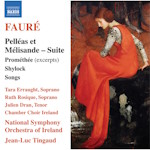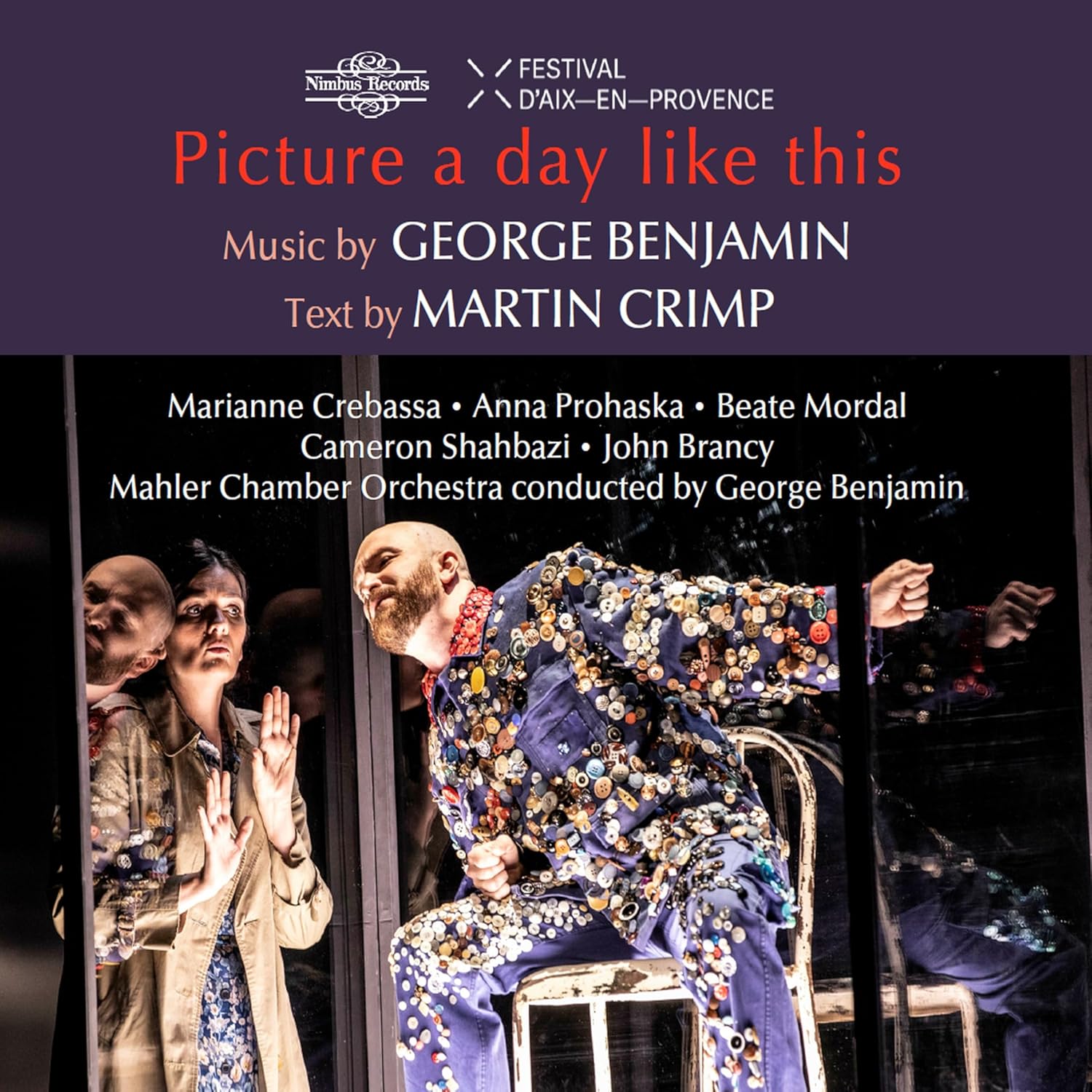
Ludwig van Beethoven (1770-1827)
Piano Sonata No. 1 in F minor, Op. 2, No. 1
Piano Sonata No. 2 in A, Op. 2, No. 2
Piano Sonata No. 3 in C, Op. 2, No. 3
Roberto Prosseda (fortepiano)
rec. 2024, Musicafelix Studio, Prato, Italy
Challenge Classics CC72980 [67]
Beethoven completed his Op. 2 set of piano sonatas, usually numbered 1-3, in 1795, when he was twenty-five. That numbering is misleading, however, as Beethoven wrote his first set of three sonatas (WoO 47) when he was thirteen. Heinrich Bossler published them in 1783 and they are well worth hearing, but we may therefore expect these works of 1795 to sound quite mature. The opening of Sonata 1 may sound familiar, as the first seven notes are the same as Mozart’s in the finale of his Symphony 40 – albeit slightly different in rhythm and articulation and in F minor rather than G minor. However, where Mozart spits out anger, Beethoven stands aside, musing on his added variations of Mozart’s original phrase, notably in the soft transition to his very own second theme (tr.1, 0:12) and then smooth, mollifying downward balancing (0:22) of the Mozart’s spikily rising start. Similarly, Beethoven’s con espressione exposition codetta (0:41) is a desire for resolution. This explains the brittleness and tension of the development from Prosseda (1:39), while he also clarifies its transformation of the second theme, suddenly intimate and moving (2:38).
Prosseda plays a historic fortepiano, made by Conrad Graf in 1820. Ronald Brautigam, recorded in 2004 (review), plays a modern copy of a fortepiano by Walter and Sohn made about 1802, closer to the fortepiano Beethoven would have played in 1795, but I appreciate Prosseda’s joy in playing the Graf; there is something about the patina of a cared-for historic instrument. The sonority is thinner but the sound melodious and articulate, so an earnest argument and a theatrical buzz come across. The Walter and Sohn piano has more glow, aided by the BIS SACD recording. While Prosseda spits fire, Brautigam is softer, achieving a greater sense of flow and elegant roundedness, but unlike Prosseda, Brautigam omits the repeat of the second half of the movement.
The dolce Adagio second movement is a beautiful arioso, at first mellow in the low register, progressing higher. The central section (tr. 2, 1:14) is both more searching and decorative with a wealth of demisemiquavers. A markedly distinct colour appears (from 2:03) through sfp, fp, and sf chords. I feel Prosseda’s emphasis on these is a touch too strong given their dissonance, yet more significant is the seamless flow he maintains. Brautigam, timing at 5:01 to Prosseda’s 4:47, is more deliberate, though his tenser treatment of the central section provides more justification for emphasising the accents later.
The Minuet has the opposite of its usual strict pulse: Prosseda well captures its offbeat entries and eager impetuousness. The Trio responds in F major after the Minuet’s F minor and climaxes with carillon-like, flowing quavers. So, this is really all a scherzo, its pace, and virtuosity relished by Prosseda and I prefer his quite fast Allegretto. Brautigam is stricter, timing at 3:27 against Prosseda’s 2:39, but in comparison sounds timorous.
The Prestissimo finale, another nod towards Mozart’s Symphony 40, is a step ahead of Mozart’s Allegro assai. Prosseda enjoys the triplets in quavers, providing an agitating backdrop to the arresting crotchet chords, later subdued by a second melodic lead of flowing descending crotchets (0:33). Prosseda plays with celebratory zest, then finely contrasts the unexpected tune in the development (1:54). Brautigam’s approach has fierier chords but less contrasted lyricism and a relaxed, yet less special, development.
The devil-may-care Allegro vivace opening Sonata 2 combines the sonata argument with witty exclamations and demisemiquaver somersaults. These ease into mulling over running quavers before a more projected, espressivo second theme (tr. 5, 0:52) and climax. The development (3:33) is jollier, blending staccato descents and more powerhouse running quavers. This unmistakably shouts the flamboyance of a virtuoso pianist, and you feel that both Prosseda and Beethoven are thoroughly enjoying this, Prosseda being the more outlandish in overall effect.
Prosseda bravely confronts the odd contrast of the Largo appassionato slow movement, with his right hand always tenuto, the left always staccato. Thus, the passion and ornamentation are dutiful, stolid, hard to accept even in the brief, assured climax. However, Prosseda brings effective involvement to the kindling of a more sympathetic vein (from tr. 6, 1:50), angelic descant (4:44), and humble ending. Brautigam offers a warmer, more humane approach with grander climaxes and more luscious descant, but not Prosseda’s sense of transformation.
Sharp contrast comes again with Prosseda’s display of the light, bouncy semiquavers in the Scherzo. Its second strain develops a melody (tr. 7, 0:30) with the subtler playfulness of dwelling on repeated notes. The ‘Trio’ (1:43) in A minor is nevertheless optimistic. Prosseda is an entertaining guide to all these features. Brautigam is a touch faster at 3:18 to Prosseda’s 3:30, with more formal virtuosity, more giggly than tinselly, more insistent in the later repeated notes, and tenser in the Trio. I prefer Prosseda’s greater relaxation.
The mood of the rondo finale anticipates that of Sonata 21, the Waldstein. This earlier cousin is more intimate, retrospective, affectionate, and elaborated in an 18th-century manner. Everything flows smoothly in Prosseda’s account, which belies the intricacy of its sonata rondo form juggling three sections (ABACABA). To start, section A glories in arpeggios rising to a plane of contentment, then the rising and falling semiquavers of section B (tr. 8, 0:37) are shared by the hands and descend into seamless pleasure. The sheer, pearly beauty of the tone of Prosseda’s fortepiano is utterly beguiling. In section B’s second part (0:58) comes a more exuberant melody. Section C (2:07) is a sudden A minor craggy terrain of right-hand rising chromatics and left-hand pungent sfs. I feel Prosseda might have made more of the change here from pp to ff. However, he still finds an emphatic f and staccato, which enables the following legato and pp (3:08) to be an effective, ghostly contrast. The return of the A section (3:44), arpeggios now in demisemiquavers, makes for a shimmering, spider-web effect.
Timing this movement at 6:32 to Prosseda’s 7:06, Brautigam brings more sense of dramatic inner momentum, a latent fire that spasmodically flares, and a grittier coda opening. In place of Prosseda’s pleasurable semiquavers, Brautigam provides virtuoso glitter and a C-section gaunter and more crisis-ridden, though his change to legato is less spooky than Prosseda’s, being more p than pp.
Sonata 3’s opening theme, soft, ornate but jocular, soon transforms to the characteristic Beethoven ff Allegro con brio manner. The second theme (tr. 9, 0:43) suggests life is more complex, while a third, dolce theme (1:17) eventually blends with the first for a rousing end to the exposition. The development (5:08) returns both to the original humour and storm flurries before the three themes reappear, followed by a coda (8:46) and ostentatious cadenza (9:14). This is over-the-top but, from Prosseda, impressive. Brautigam favours a grander, more incendiary approach whereas the more mischievous Prosseda allows more sparkling dynamic contrasts and relaxation.
The jaunty opening theme of the first movement returns, transformed, as the soulful, succinct reverence of the second movement Adagio. The chief melody is simple and brief. In the central section, E minor after the opening theme’s E major (tr. 10, 0:59), against a stream of repeated demisemiquavers in the right hand, the left-hand provides a chorale-like bass, alternating with snatches of soprano melody (from 1:10), which grow more expressive. The ‘chorale’ bass suddenly appears ff in brutal chords as if bent on destruction (from 2:13); but the earlier soprano snatches stand firm, leading to a smooth recapitulation of the opening melody and the coda’s luminous upper register and decoration (5:44). After this, I feel Prosseda rightly understates the final ff marking (6:11) and the sfs (from 6:56) to confirm the soprano’s victory.
Prosseda shows that his historic piano can sound ugly as well as delicate. Is this where a fortepiano can be more telling than a modern piano? I checked the latter from Igor Levit in 2017 (Sony 19875843182). Timing at 7:42 to Prosseda’s 7:20, Levit seems more measured, even reverential. His central section’s ‘soprano melody’ is more beautiful than Prosseda’s yet feels icily remote; the ff passages have more sonority yet less bite. Levit’s emotion seems recollected in tranquillity where Prosseda’s is present. Levit’s playing is lovely to hear, but Prosseda’s is both more vividly dramatic and moving.
The Scherzo is perpetually tricksy in its intensive study of echoing melody between treble, alto, and bass registers. This is highly disciplined, yet Prosseda plays daintily, making dynamic contrasts crisp. The Trio (tr. 11, 1:36) features from Prosseda mellifluously busy right-hand quavers in triplets against a very steady bass. Brautigam, timing at 2:57 against Prosseda’s 3:26, provides a more virtuoso yet less nuanced account, his Trio a hectic mirage of sound.
As in the first movement, the Allegro assai finale has three themes, the opening one of joyous, rising phrases followed by somersaults of semiquavers which Prosseda makes glitteringly pacy yet not rushed. The second theme (tr. 12, 0:31) is more fluently melodic, while the greater breadth of the dolce third theme (1:43) is reassuring and promising. Prosseda achieves all this ‘to the manor born’. Brautigam’s first theme I find too formal, to contrast his more breathtaking virtuosity in semiquaver runs which are thereby less joyful than Prosseda’s. Brautigam’s third theme is more distinctive in its relaxation, but Prosseda gives it more warmth.
Michael Greenhalgh
Buying this recording via a link below generates revenue for MWI, which helps the site remain free



















